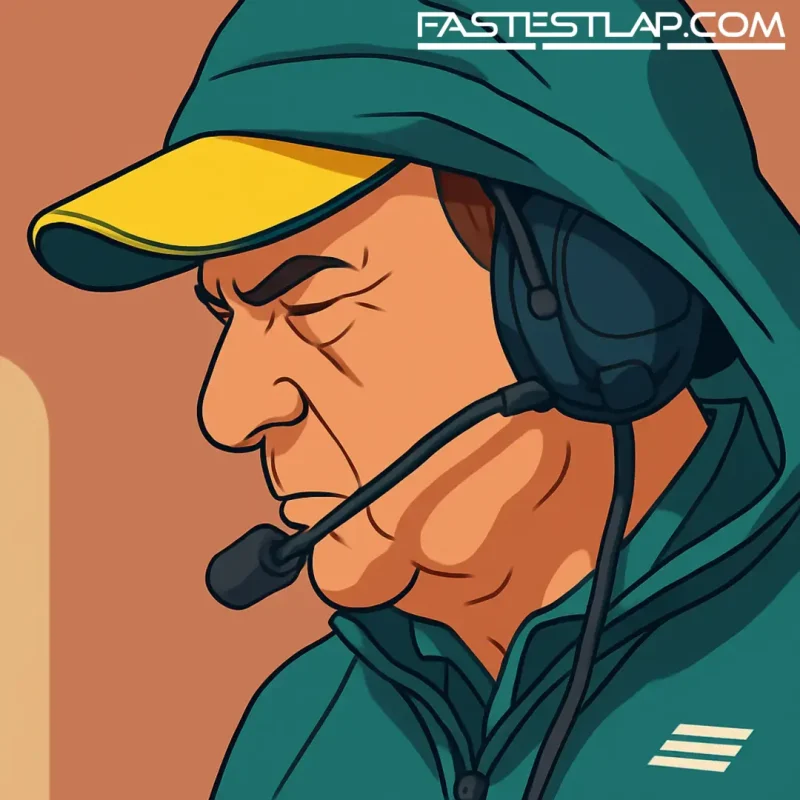Chandhok’s sober warning on Newey: “Genius won’t win without a machine behind it”
Adrian Newey can walk a grid in a hoodie like a detective at a crime scene, eyes darting over brake ducts and rear wings, but even he can’t brute-force Aston Martin into title contention on his own. That’s the line from Karun Chandhok, who’s been around enough F1 factories to know brilliance still needs an army.
Newey, now 66 and the most decorated designer F1’s ever seen — north of 200 wins and 26 combined Drivers’ and Constructors’ titles — is deep into Aston Martin’s first proper 2026 car, expected to be the AMR26. He joined in March as managing technical partner, the cornerstone of a wider rebuild that also includes Honda power for the new regulations.
It all sounds frightening on paper. In practice? Chandhok’s urging caution.
“A race team is a very complex structure,” he said, blunt as ever. You can have star names front of house — the drivers, the team boss, the headline technical leader — but it’s the thousand people behind the curtain who decide whether it actually works. “None of those people can achieve any form of success if the thousand others within the team are not functioning as a cohesive unit.”
That’s the crux with Aston Martin right now. They’ve stacked the top end: Andy Cowell has taken over as team principal for 2025 and Enrico Cardile, formerly Ferrari’s technical director, has arrived as chief technical officer. Layer Newey on top and you get a leadership lineup with enough CV to fill a trophy cabinet. The question is whether Silverstone can stitch it all together fast enough to land the 2026 regulations running.
Chandhok’s point lands because F1 isn’t a road-car program where a four-year cycle gets you from sketch to showroom. It’s a sprint that never ends. Teams design a new car every winter, then rework it relentlessly — every race or every few — recalibrating wind tunnels, correlation tools, and manufacturing pipelines as they go. There’s nowhere to hide. Your quarterly report is the stopwatch, and it doesn’t lie.
That unforgiving cadence is precisely why Aston’s restructuring matters as much as any wind-tunnel breakthrough. Newey’s genius is as much about system-building as it is about pen strokes. At Red Bull, he didn’t just draw fast cars; he helped align aero, vehicle dynamics, R&D, race engineering, and ops into a rhythm that made updates land when they should and work when they arrived. If that cultural coherence takes root at Silverstone, the Honda partnership becomes more than an engine supply — it becomes a performance philosophy.
There’s also the driver loop to consider. Newey’s rapport with experienced drivers has historically been a cheat code for development, translating feel into function with ruthless efficiency. That feedback cycle — chassis balance, energy management, aero stability — is where gains come alive in the 2026 era, when active aero and hybrid interplay will punish any disconnect between simulator metrics and what the driver can actually exploit on a Saturday.
None of this diminishes the buzz. Aston Martin didn’t recruit Newey to play it safe; they recruited him to change their ceiling. And if the AMR26 is the first proper expression of this new brain trust — Newey, Cowell, Cardile, plus a Honda works deal — then expectations are rightfully high.
But Chandhok’s warning is useful because it cuts through the noise. Titles aren’t won on a whiteboard. They’re won when design, production, reliability, and trackside teams move like a single organism, shipping upgrades on time and with correlation that gives drivers confidence. Get that cohesion, and Newey’s impact multiplies. Miss it, and even the sharpest pencil dulls quickly.
The stopwatch will tell us soon enough. For now, Aston Martin have the names, the infrastructure, and a regulation reset coming right on time. The next 12 months are about turning that into a machine.




